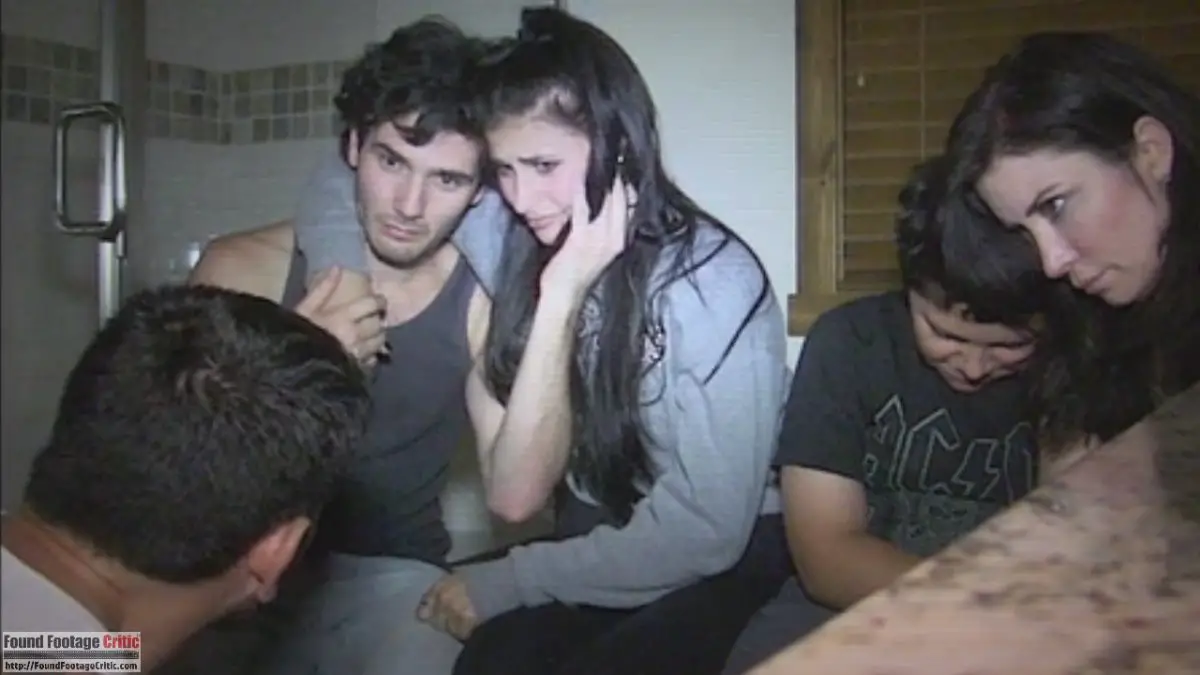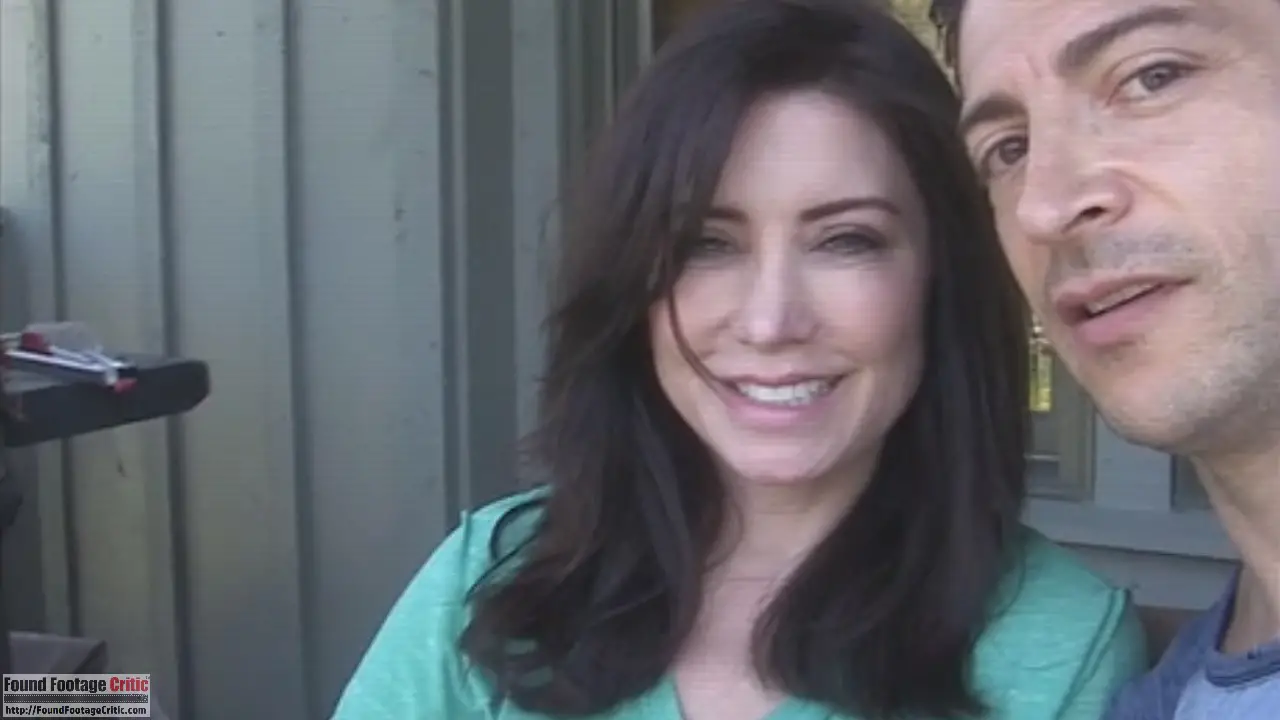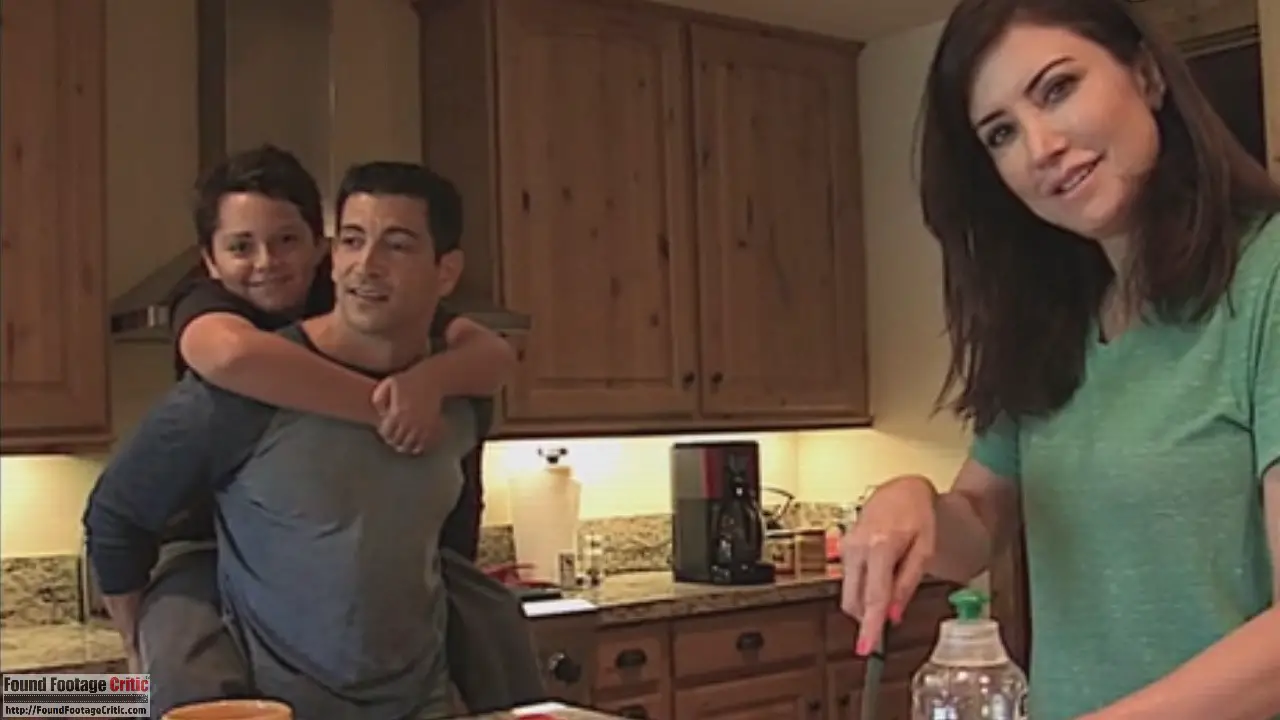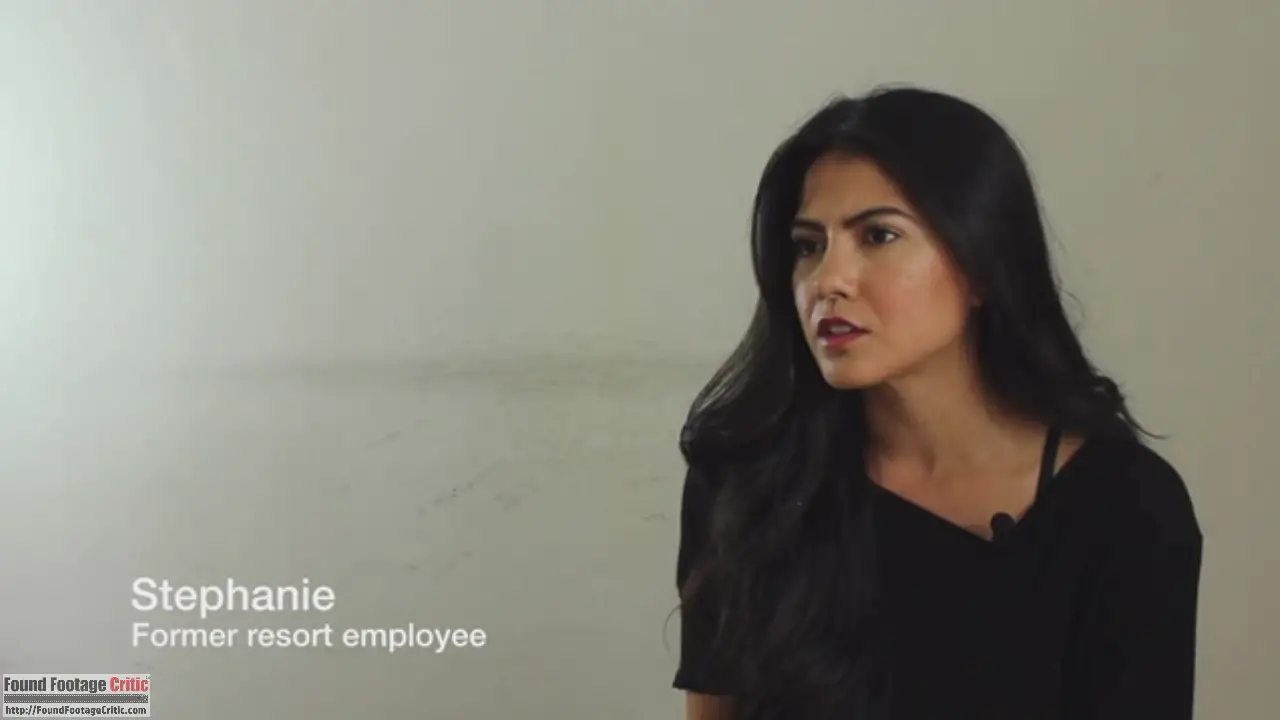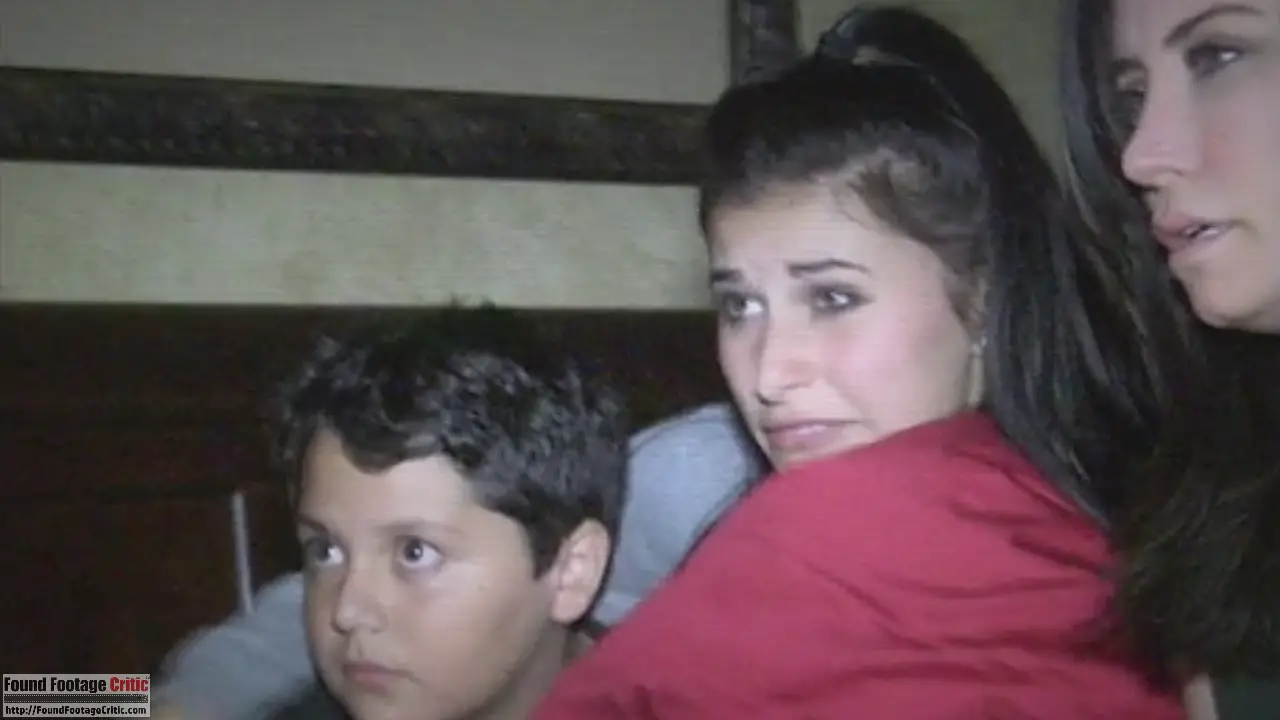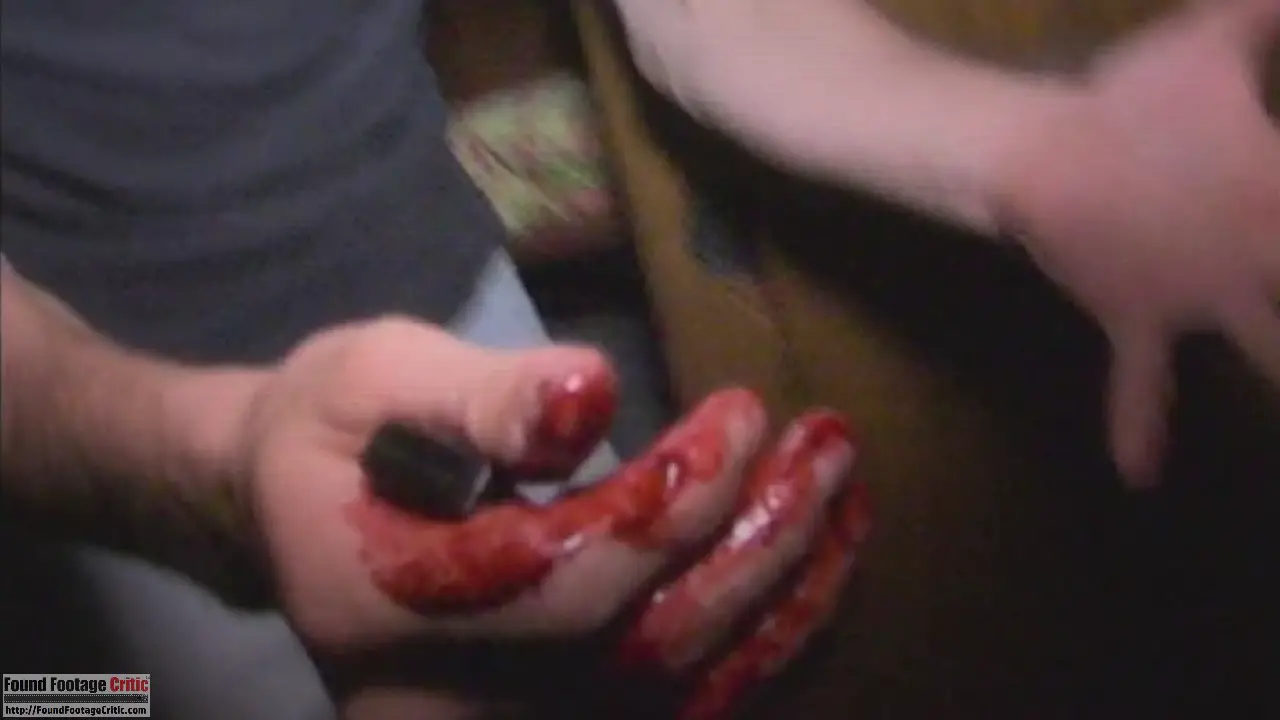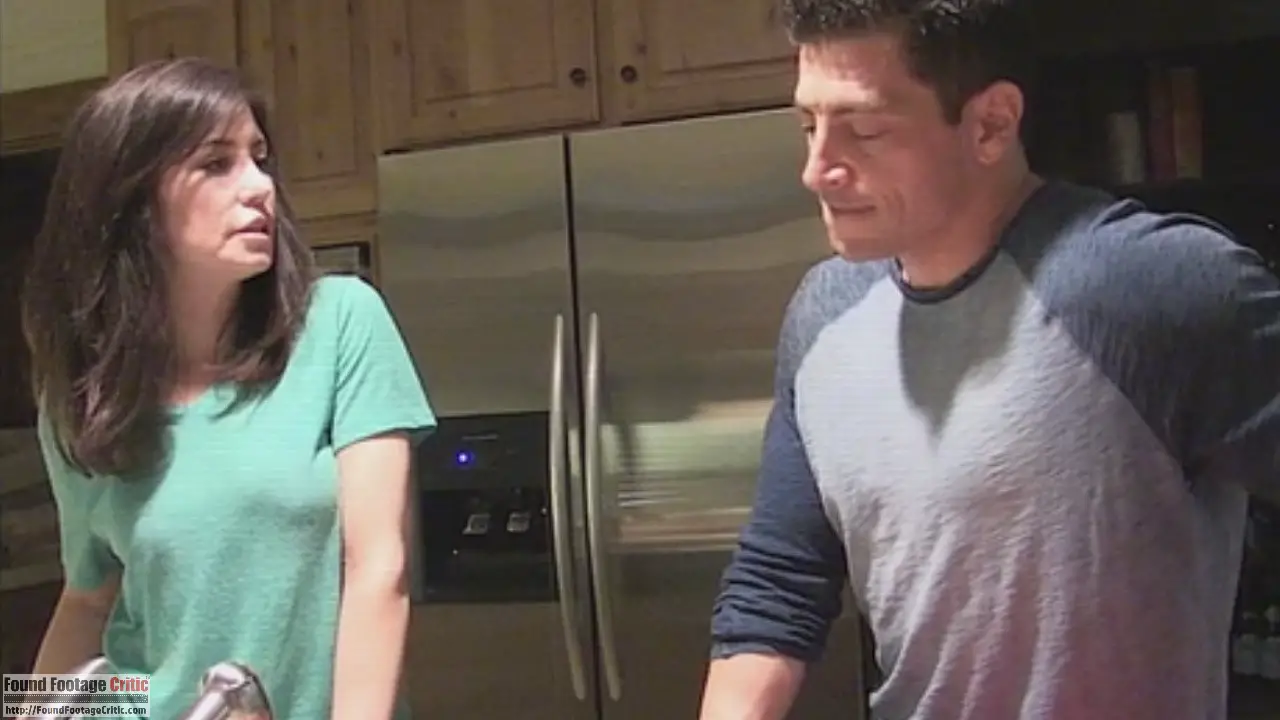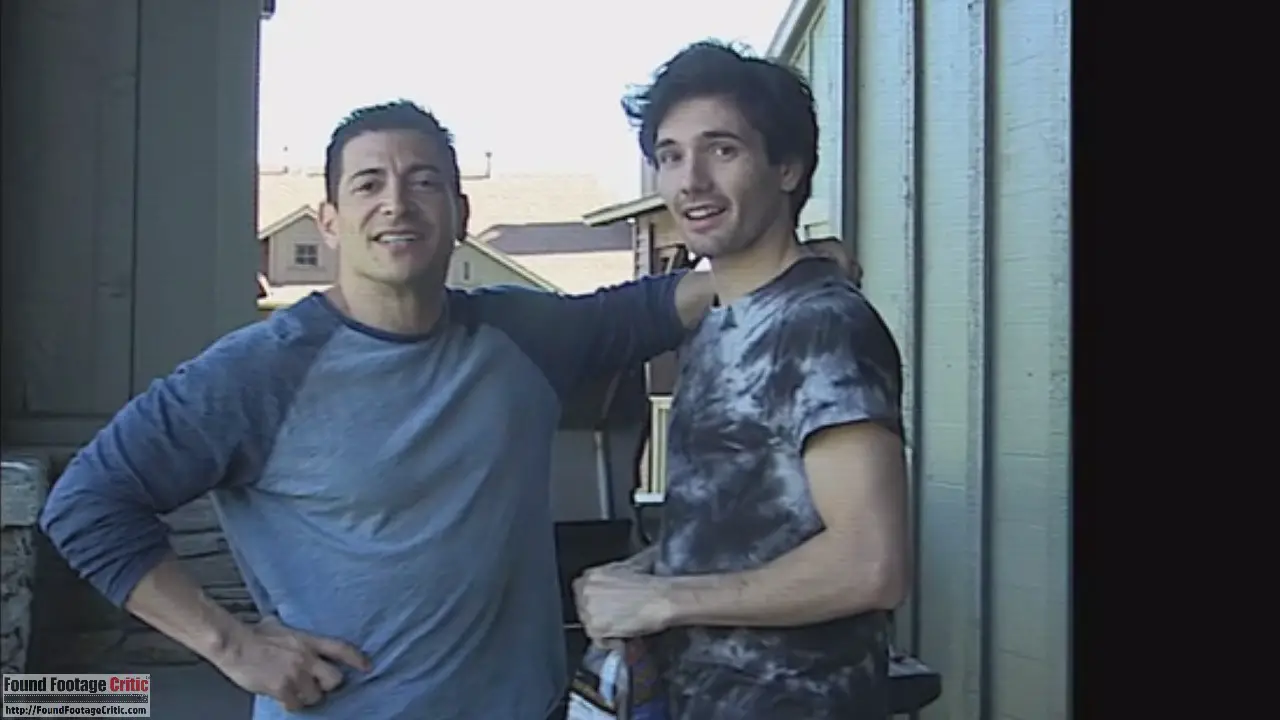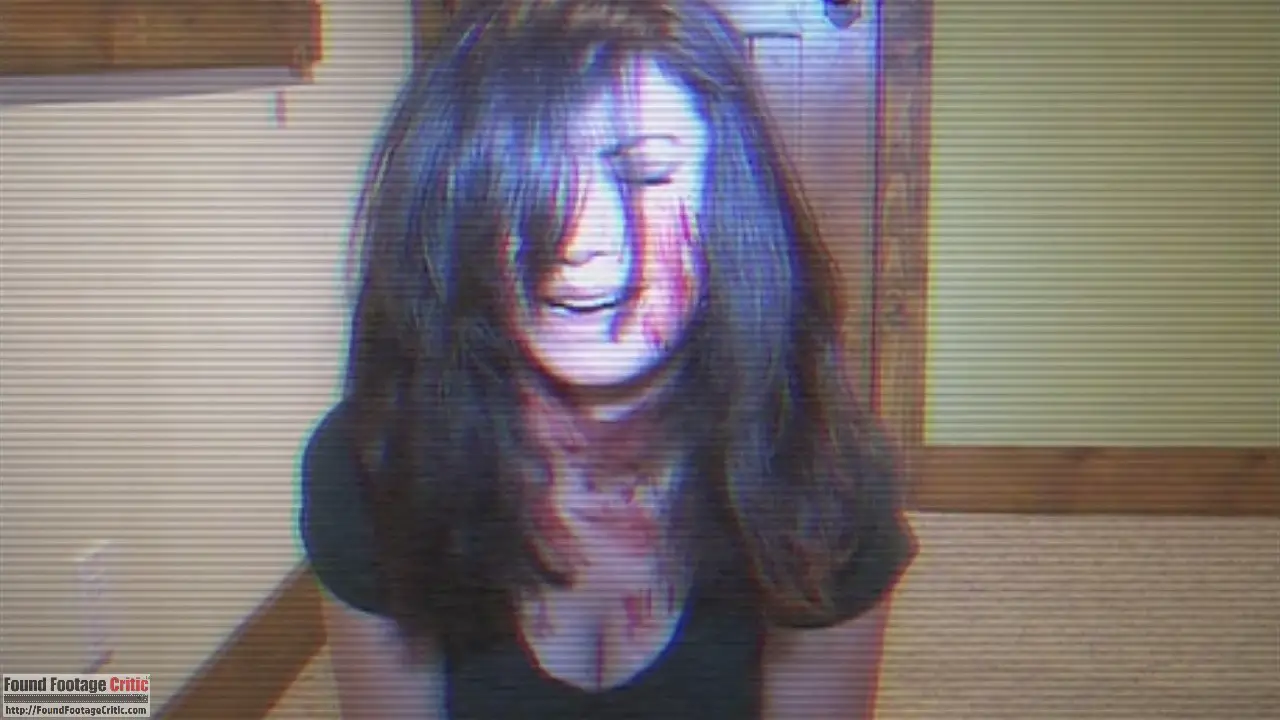Home Video is a found footage horror film directed by Emmanuel Giorgio Sandoval and written by (in alphabetical order) Zaidal Obagi, Emmanuel Giorgio Sandoval, and Robert A. Trezza. The film takes the form of a mockumentary recapping the apparent murder and mysterious disappearance of a family during the first night at their new house in a secluded town in the California mountains.
Like so many found footage films before it, Home Video sets the stage with an on-screen typed statement, “Shortly after moving into their new home, the Diaz family disappeared. Without any substantive evidence, the case was later dismissed. The following footage was found on the dark web and its rights have since been secured by the producers. All interviews were recorded by our crew. Last names were left out in order to ensure the safety of everyone involved. Viewer discretion is advised.”
As the name implies, Home Video is presented as a video tape of family home movies. Interleaved within the “home video” are mockumentary style interviews of family, friends, acquaintances, and local town officials presenting their opinions and hypotheses as to what actually took place on that dark historic day.
The home movie portion of the film opens with a family’s drive to their house in the mountains. En route, the family briefly stops at a scenic overlook, where we’re introduced to Bruce (Steve Jacques) and his wife Jennifer (Cara O’Brien), and their teenage daughter Kacie (Alana Chester) and son Manny (David Mendoza). Also in the car is Kacie’s boyfriend Mark (Thomas Decurgez) who comes along to visit and help with the move.
During the drive up and move-in, a good amount of character development takes place. We learn that Kacie is moving away to college in three months time, and her younger brother Manny is quiet and somewhat reclusive. Bruce is clearly the alpha personality within the group and has some notoriety from having played in the minor leagues before injuring his knee. Looking out for his daughter’s best interests, Bruce spends a healthy amount of time getting to know Mark, who is quiet and somewhat intimidated by Bruce’s outgoing personality. Throughout the home movie portion of Home Video, the handheld video camera is periodically held by different family members and Mark as they document their first hours in the new house.
Interleaved within the home movie are numerous interviews highlighting the horrific events that took place that day, as s well as testimonials describing the idiosyncrasies of each of family member. Some of the interviewees believe there are supernatural forces at work, others blame the events on a burglary gone bad, while still others claim that specific family members and even Mark are to blame for the grizzly murders. All the while, local town officials take a defensive stance, denying any wrongdoing on the part of the town or its residents and doing their best to uphold the integrity and good standing of their community.
Following the final presentation of interviews in the film, the chilling climax of Home Video plays the raw found footage showing what befell the family on that horrific night. Now viewers can see that footage and judge for themselves.
Found Footage Cinematography
Home Video does a good job executing the found footage cinematography. The film contains no significant narrative cinematic elements that break the illusion that viewers are watching actual found footage. The home movie portion of the film is presented in a 4:3 aspect ratio and contains visible horizontal scan lines that portray a recording made from a handheld VHS camcorder.
The camerawork looks rough enough to convincingly pass for having been recorded by a layperson wielding a video camera, quite often filming characters to the far left or right of center frame. If there are any complaints to be had, it’s the unnecessary shakiness of the video camera during stationary filming in the house before anything “bad” starts to happen.
Of note is the camerawork by Manny, who films very differently than the adults. Manny shoots from the perspective of a child, often stealthily (and sometimes voyeuristically) filming other family members as he wanders the house, capturing candid conversations between the characters.
At Found Footage Critic, we like to see new and interesting cinematic techniques employed in found footage films, and Home Video has one such moment. There’s a scene where two of the characters are out in the forest at night and young Manny follows them out with the video camera, filming them in hiding. True to form, something jarring takes place causing Manny to get scared, drop the video camera, and (presumably) run home. The video camera is left filming on the ground capturing footage while still aimed on the group. While having a dropped video camera continue recording is not entirely new in found footage films, the variation on this approach that’s used in Home Video is a breath of fresh air.
The interview portion of the film is presented in wide-screen digital format, which lends a nice contrast to the home movie footage. Unfortunately, several of the interviews have very poor audio quality. Ironically, the home movie portion of the film has perfect end-to-end audio, but the staged, “professionally shot” interviews have significant audio (volume) issues.
Home Video starts with the sound of a VHS tape being inserted into a VCR, followed by the stereotypical blue screen and “Play” message common to VCRs. While it’s possible for the blue screen and “Play” message to record if two VCRs are strung together to record a copy of a VHS tape, the tape insertion sound would not record. Since this film is clearly an edited mockumentary with interviews that were subsequently added, these audio and screen elements are assumed to be included as part of that edited footage for show.
Filming Reason
The found footage filming reason used in Home Video is generally effective. All too often, found footage films record all the events that transpire without a convincing justification for the existence of a feature length’s worth of video. Home Video is a composite of video captured in the form of family home movies shot from the perspective of each family member and boyfriend Mark. Bruce is a bit obsessive, filming everything as this is a pivotal moment for his family and he wants to capture every moment. During the latter part of the film, the house loses electricity and the characters continue filming, using the video camera as a light source, providing some modicum of justification for filming during stressful and life threatening moments.
Acting
The acting in Home Video is generally well done and convincing for what the film sets out to achieve. Steve Jcques (Bruce), Cara O’Brien (Jennifer), Alana Chester (Kacie), and David Mendoza (Manny) artfully play the stereotypical family, with all the tropes and nuances that come with that role. These four actors have a good chemistry and their acting comes across as natural and fluid. Additionally, their personas and idiosyncrasies match the profiles offered during the film’s many interviews. Tomas Decurgez (Mark) does a great job playing Kacie’s shy and somewhat reclusive boyfriend. The acting during the interview portion of the film is well done, although (as mentioned earlier) there are audio issues with some of the interviews.
Plot
While Home Video is cinematically correct for a found footage film, it’s the pacing that presents the greatest challenge. The general premise is very interesting, but the pacing of the film is too slow and it takes too long for the story to reach the point where something noteworthy happens that furthers the plot. With a run time of 81 minutes, the film feels 20 minutes too long, as there’s simply too much time spent during the interview segments, which for the most part present the same information over and over from the perspectives of different interviewees. The home movie portion of the film, while interesting to watch is also slow at times. Tightening up the story and losing some of the redundancy would help keep the average viewer readily engaged from beginning to end and increase the entertainment value, but doing so may bring the film below the run time of a feature length film. As mentioned earlier, the acting and cinematography are all above average for a found footage film, but the pacing negatively impacts the overall experience. Despite these setbacks, Home Video is a film worth watching.

